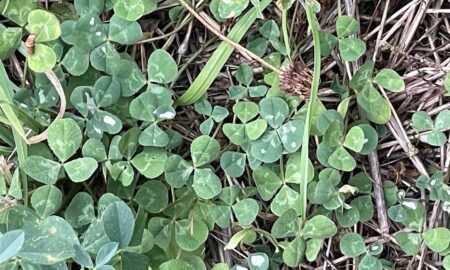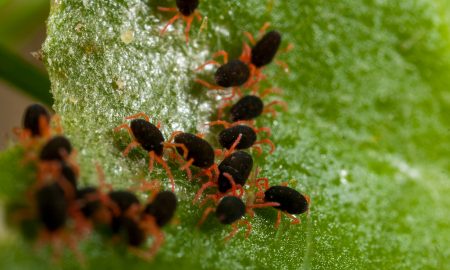For the third year in succession, these unusual invertebrates appear to be constraining plant establishment.
Where have they been reported?
Large numbers of small, white to cream ‘millipede-like’ invertebrates have been reported closely associated with patches of seedling failure in an establishing annual ryegrass pasture near Corryong in Victoria’s North East.
Concerns were first raised due to the poor performance of ryegrass in large patches within the paddock, where symphilids were found just below the soil surface.
In 2015, symphilids were found attacking establishing clover/phalaris pastures near Corryong, and in 2014 we received reports of symphilids attacking cereal crops around Young and Cootamundra in the South West Slopes district of NSW. These were the first symphilid reports to the PestFacts Service.
All reports of symphilids have been from within the 600-900 mm annual rainfall zone.
About Symphilids
Symphilids are not common pests in Australia and are more frequently associated with Australian horticulture than broadacre agriculture.
Accounts from the US and New Zealand, where they are more common, suggest that symphilids are found mainly in moist, open-structured soils often containing plant/crop debris. Detailed information can be found at the Vegetables Victoria website and Massey University – Guide to New Zealand Soil Invertebrates.
Symphilids are not insects; they belong to the ancient sub-phyllum Myriopoda (“thousand-legged”) and are thus closely related to millipedes and centipedes.
The garden symphilid (also known as Symphylan in the US) are small, white, soft-bodied ‘centipede-like’ invertebrates, 3-7 mm long with 12 pairs of legs and a pair of antennae. The notable antennae are long and many-jointed. The soft, white body is divided into 14 segments, 12 of which bear pairs of hook-like legs. All of the legs on one side move simultaneously, alternating with those on the opposite side, thus producing a twisting and turning motion. They are sensitive to light and become very active when exposed.
Most symphilids are thought to be omnivorous, feeding on decaying organic material, soil microorganisms and root systems of plants. Some species are predominantly herbivorous.
Importantly, herbivorous symphilids feed on the root hairs of plants and can also tunnel into the roots and stems leading to stunting and plant loss.
They are known to feed on sprouting seeds and underground stems of seedlings.
Depending upon the extent of feeding, plants are weakened or killed.
Our advice
There is nothing known about control options for symphilids in Australian cropping and pastures. We drew the following recommendations from New Zealand literature.
To check for symphilids, turn over at least 10 shovels of soil. Sift the soil while looking for active symphilids. Some research suggests that an average of 1 symphilid per shovel of soil may warrant chemical treatment of the infested area before planting the next crop.
Mark off the infested area; the entire paddock need not be treated.
Numerous naturally occurring organisms prey on symphilids in the field including true centipedes, predatory mites, predacious ground beetles and various fungi; however, nothing is known about their ability to control symphilid populations.
Acknowledgements
Sources of field reports
Graham Martin – Agronomist, Agmate Rural (North East Victoria)
Cover image: Photo by Soniamartinez, CC BY-SA 4.0





